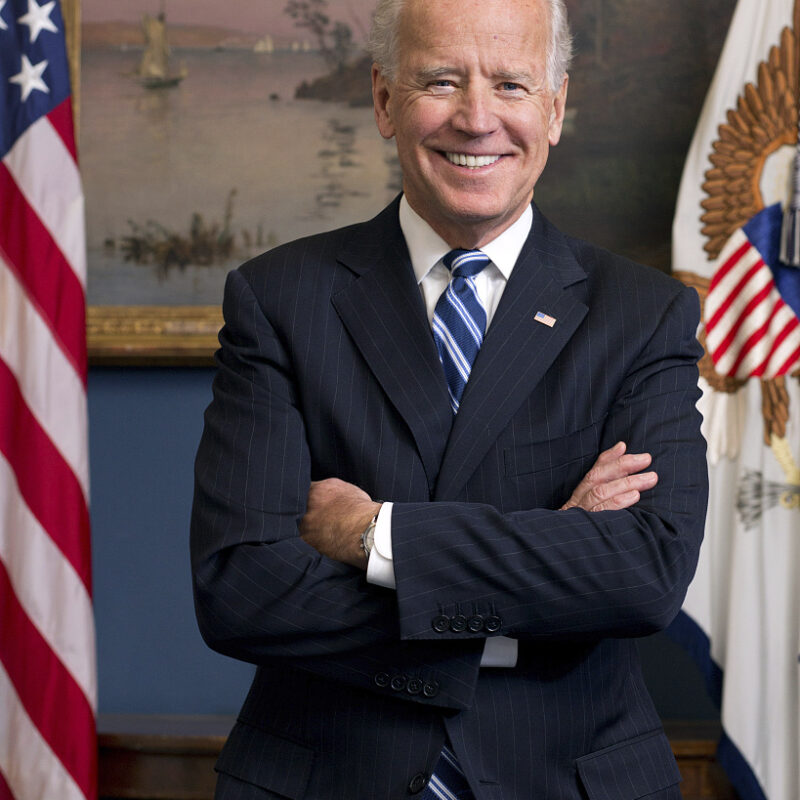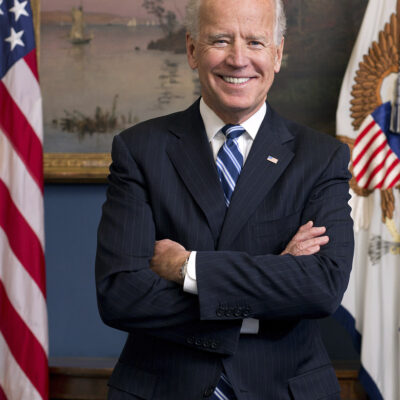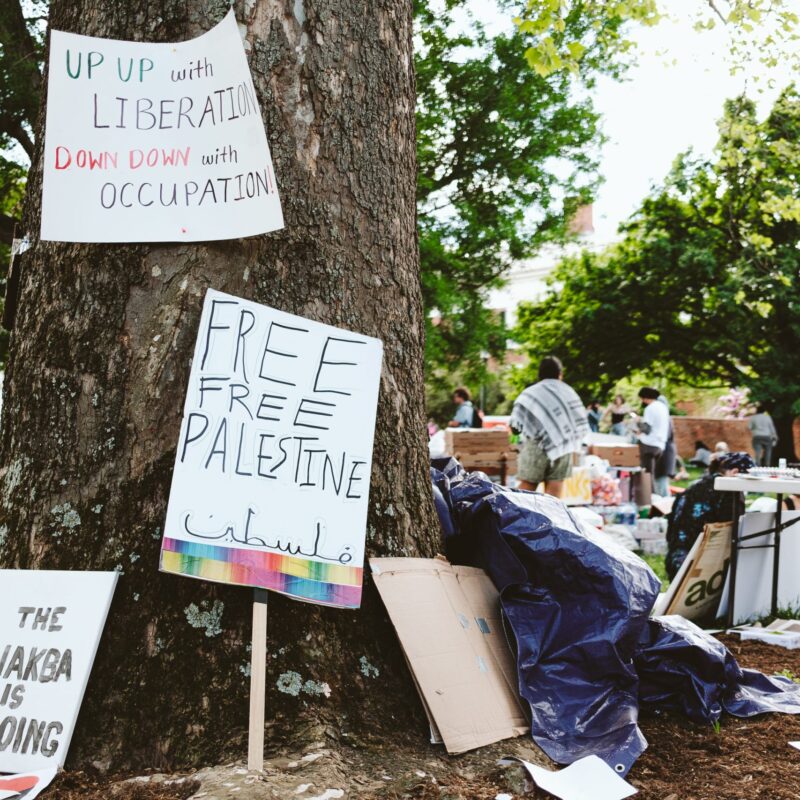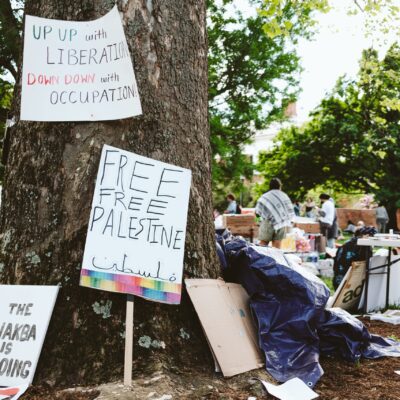There are lots of things we Virginians think we are (e.g. better than West Virginia) and lots of things we think we aren’t (e.g. a bunch of gun-toting, tobacco-chewing, suburban-sprawl-loving hicks). Also, lots of things we wish we were (e.g. home to a major professional sports team), and lots of things we wish we weren’t (e.g. former segregationists). And of course, plenty of things we’re glad we’re not (i.e. New Jersey). But many of our assumptions of where Virginia stands are often wrong, and many of the statistics change faster than George Allen’s chances at re-election to the U.S. Senate. So we did a lot of digging to find out, as of last count, exactly where Virginia ranks vis-à-vis the rest of this great nation on everything from peanuts to pornography and business to breast cancer. For better or for worse, here’s an official tally of us versus them, from No. 1 to No. 50. And no, this is not an exhaustive list of every possible quantifiable attribute of the Old Dominion, so don’t go complaining to us that we forgot to give a ranking for, like, the number of broiler chickens in the Commonwealth. It’s ninth by the way, but we couldn’t fit everything.
 |
| More:
Be glad Virginia doesn’t… |
No. 1 Business; Personalized license plates
The first statistic comes from Forbes magazine’s “Best States for Business” survey in 2006, as well as CNBC’s 2007 survey of “America’s Top States for Business.” In the Forbes report, Virginia garnered the top ranking by placing in the top 10 in each of the following categories: business costs, economic climate, growth prospects, labor, quality of life and regulatory environment. Forbes found that Virginia has the most business-friendly regulatory environment and that business costs (e.g. taxes and energy) are 9 percent below the national average. The state of Texas was ranked No. 2 overall—take that, George I-gave-Enron-anything-it-wanted Dubya.
As for the vanity plate ranking, the evidence is in the nauseating number of variations on UVA alumni-ness on Virginia roads (e.g. Hoo 97; UVA 98; Wahoo 99; and on and on and on…) as well as the numerous other, ahem, clever phrases coined by our local drivers. And in 2007, the American Association of Vehicle Administrators confirmed for a fact that Virginia has the vainest drivers, with a whopping 16.19 percent of total license plates being personalized.
No. 2 State executions
O.K., you got us on this one, Texas. The Lone Star State has executed 355 inmates since 1977, while Virginia had, at press time, executed a considerably less impressive 94, and that’s surprising considering that Virginia can execute criminals as young as 14, whereas Texas requires a minimum age of 17.
No. 3 Economy
In CNBC’s 2006 “Top States for Business” survey, Virginia ranked third in the subset category of economy. CNBC reviewed each state’s economic health and growth potential and cited Virginia’s low unemployment rate (see No. 47) as one of the biggest contributing factors to its high economic ranking.
No. 4 Tobacco sales
This figure comes from the Department of Agriculture’s 2002 census, and it’s out of 23 total states that produce the main ingredient for cancer sticks and snuff. It was Virginia’s highest ranking for sales of agricultural commodities, and the total value of tobacco sold in Virginia that year was $112,503,000. Perhaps the fact that this crop is a cash cow has a little something to do with why the Virginia House of Delegates continues to defeat proposals aimed at banning public smoking.
No. 5 Wine production
According to the Virginia Vineyards Association, Virginia has 130 wine producers and 262 vineyards, making it fifth in wine production behind California, Washington, Oregon and New York. Last summer, Travel + Leisure magazine named Virginia “One of Five Up-and-Coming Wine Regions in the World.” For that reason, and because we suspect there are tons of retired lawyers, doctors and business folks in our midst just salivating to sink their fortunes in a wine enterprise, we predict these numbers will increase exponentially over the next few years. Also, the Commonwealth recently made it just a little easier for little fish to enter the pond—in April, Virginia launched a subsidized distribution company to help the smallest wine producers manage the costs of selling wine through a licensed wholesaler.
No. 6 HIV cases
The ranking is based on 2006 figures and includes only people infected with HIV that has not progressed to AIDS. As for total cumulative AIDS cases, Virginia ranks 13th out of the 50 states and the District of Columbia. We asked Gwen Jones, director of research and evaluation at Charlottesville’s AIDS/HIV Services Group, why Virginia ranks so high, and she said, “It’s a combination of Virginia having large metropolitan areas, where high population-density contributes to the spread of infection, and poor rural areas, where there aren’t a lot of resources or access to education.”
No. 7 Personal income per capita; Peanuts; Hybrid car sales
Personal income per capita was $37,552 in current dollars in 2005. In peanuts, Virginia was seventh out of nine peanut-harvesting states and produced a total of 104 million pounds in 2004.
As for hybrids, there were 10,037 such vehicles sold in Virginia in 2007. Even more impressive still is that for the same year, Charlottesville ranked seventh among all metropolitan areas in the country for the popularity of hybrids, with 5.763 such vehicles sold per 1,000 households in 2007. That’s a pretty astounding figure considering Charlottesville’s percentage sales exceeded such well-known “green” towns as Seattle, Sacramento and Denver, but it’s not surprising if you’ve ever been to Barracks Road Shopping Center on a Saturday afternoon and seen Prius after Prius after Prius parked in the lot.
No. 8 Median household income; Grape production
In 2005, Virginia’s median household income was a staggering $54,240, the eighth highest in the country. Such high incomes may explain why local folks can afford to buy the crazy expensive Virginia wine around here (e.g. $39.99 for a bottle of 2004 Barboursville Octagon direct from the tasting room). Lucky for us winos with a little less in our pocket books, however, that the 2006 commercial grape harvest increased 11 percent over 2005 to 6,200 tons, which was the eighth biggest grape harvest in the country [pdf]. We take the double-digit percentage increase in production as a possible indicator of cheaper vino to come. More grapes means more wine and more volume means lower prices, right? That’s how Wal-Mart works, anyway.
 Bursting forward: The 2006 commercial grape harvest in Virginia increased 11 percent over 2005 to 6,200 tons. |
No. 9 Average annual pay; Prevalence of strokes
Average annual pay in 2005 was $40,534. Whether there’s a correlation between what it takes to earn that keep and the eerily similar ranking in the prevalence of strokes is only for us overworked souls to speculate.
No. 10 Bachelor’s degree or more
We’s smart, y’all. As of 2005, 30.5 percent of the population 25 and older had a college degree.
No. 11 Educational performance; Gross domestic product
The education ranking comes from the latest Report Card on American Education: A State-by-State Analysis from the American Legislative Exchange Council (ALEC), which covers the school years 1985-86 through 2006-07. That’s a high ranking, right? We should be proud, right? Um, sort of. ALEC says the latest report also seems to indicate that there is no direct correlation between increased funding measures and student performance. For example, over the nearly 20-year period studied, Virginia increased its per pupil expenditures by 77 percent to $9,478 (the 21st best in country) and decreased its pupil-teacher ratio by 25 percent to 12.6 (the 6th best in the country), and yet, in the last 10-year period, Virginia’s average SAT scores improved only 1.19 percent to 1,022 (the 33rd best in the country). We think this proves only one thing: Standardized tests are crap.
As for gross domestic product (the value of goods and services produced by labor and property), Virginia’s was $352 billion in current dollars in 2005.
No. 12 Resident population; Sex offender registry
As of July 2006, Virginia’s resident population was 7,642,884, making it the 12th most populated state in the Union. Incidentally, as of July 2007, there were 13,805 registered sex offenders lurking among that population (according to the Klaas Kids Foundation, which crunched all the numbers in Virginia’s sex offender registry). We’re not sure where that figure puts us on percentage of perverts vis-à-vis other states, but according to one recent survey of state sex offender registries, Virginia does a decent job of providing a searchable database of such offenders. In 2008, research firm TopTenREVIEWS, Inc. conducted a national survey of the quality of sex offender registries and gave Virginia a No. 12 ranking based on the searchability and ease of use of the database.
No. 13 Aquaculture production
Despite the high ranking, we had no idea what aquaculture was before we started this story. It’s the harvesting of plants and animals that live in water (e.g. fish; shellfish; algae). We sold $19,945,000 of the stuff in 2002.
No. 14 Gun law scorecard; Infant mortality
The Brady Campaign to prevent gun violence gave us the No. 14 ranking for the strength of our gun laws. That seems like a respectable ranking, except that Virginia only earned 18 points out of a possible 100 points on the scorecard. Brady dinged us for what we don’t require by law (e.g. child safety locks and background checks when private collectors sell to the public at gun shows (a.k.a. the “gun show loophole”)). Recently, Virginia has been getting all kinds of media coverage for its gun friendliness—first there was last year’s tragedy at Virginia Tech when Seung-Hui Cho shot down 32 of his classmates and professors with firearms he’d purchased after he’d been adjudicated mentally ill, and then our own Scott Weaver revealed in a cover story (“Follow the guns,” October 9, 2007) that Virginia is the leading supplier of out-state-guns to New York City, where it can take up to a year to get heat legally. It takes five days or less to get a gun from a dealer in Virginia and only minutes to get one from a “collector” at a gun show, thanks to that loophole. The Brady Campaign will probably be happy to know, however, that in the wake of the Virginia Tech shootings, Virginia has improved its background check process to incorporate a search of mental illness adjudication.
As for infant mortality, another pleasant topic, Virginia’s rate of infant deaths was 7.7 per 1,000 live births in 2003. We find the No. 14 ranking shocking, and by the way, do you know whose infant mortality rate was lower? West Virginia’s! On its own website, the Virginia government states that the infant mortality rate is a reflection of socioeconomic factors. How then to reconcile the high mortality rate with the fact that Virginia has the third best economy, the seventh best personal income per capita, the eighth best median household income and the ninth best average annual pay? Hey Richmond, this stuff doesn’t trickle down, and those WIC commercials aren’t doing enough.
No. 15 Breast cancer death rate
This ranking is a little too high for our comfort level, and we’re starting to think women are getting a raw deal in Virginia (see No. 14 and No. 48).
No. 16 Suicides; Abortions (legal)
We have some real uplifting statistics right in a row here, don’t we? The first one comes from Mental Health America’s 2007 analysis of depression across the states, which reports 828 suicide deaths in Virginia in 2004. The second figure comes from StateHealthFacts.org, which reports the abortion rate was 16 per 1,000 women aged 15-44 in 2004.
No. 17 Number of children with autism
In 2003, 3,951 people ages 3 to 22 had diagnosed autism in Virginia, and in the 2006-07 school year, 1 out 156 children in Virginia public schools had autism. You know who had fewer autism cases? West Virginia! We’re choosing to believe Virginia’s just better at diagnosis.
No. 18 Least depressed state; Child safety
We’re way confused on the depression ranking. According to the same Mental Health America report mentioned in No. 16 above, we are the 18th least depressed state (measured by the prevalence of depression and serious psychological distress among adults and adolescents), but we have the 16th highest suicide rate. The only thing we can figure is that the few-ish people who are depressed aren’t getting enough help (for more on this topic, see Scott Weaver’s two-part serious on mental health reform in Government News, April 8, 2008 and April 15, 2008).
But you little ones, well, as long as you can survive the perilous infant stage (see No. 14), you’re in pretty good shape for a while, at least as far government regulation goes. The child safety ranking comes from Parents magazine’s April 2008 survey, which rated states on 30 criteria, including child violence- and accident-related benchmarks. Virginia got called out for not having a statewide bike helmet law, however.
No. 19 Per capita state general fund expenditures
In 2006, the Commonwealth spent $1,993 on each of us (in a sense) out of its general funds. v
No. 20 Pig and hog sales
Value of pigs and hogs sold in Virginia in 2002: $72,213,000. Value to the local food movement of public outrage over the government’s prosecution of Double H Farm for selling uninspected pigs and hogs in Virginia in 2007: priceless. (For the latest on Double H, see “Double H farmers enter plea deal,” Courts and Crime, February 26, 2008).
No. 21 Health insurance coverage under age 65
The percentage of the under-65 population that was insured as of 2006 was 85.3 [pdf].
No. 22 Number of Wal-Mart stores
According to Statemaster.com’s latest count, the big bad box-store chain we all love to hate (and secretly visit to buy cheap “organic” food) has 20 stores in Virginia.
No. 23 Greenest state
Forbes was at it again, this time ranking states based on six “green” criteria: carbon footprint, air quality, water quality, hazardous waste management, policy initiatives and energy consumption. If the mag had given out points for oft-quoted green poster boys, Virginia surely would have ruled the competition, being that it’s home to William McDonough, green architecture and design visionary, former UVA Architecture School dean and co-author of the green handbook, Cradle to Cradle.
No. 24 Percentage of the population under 18
We don’t really know what to make of this one. Apparently, we’re in the middle of the deck when it comes to citizens born after the premiere of “The Simpsons” on Fox and after the first webpage was published on the World Wide Web. Draw whatever disturbing conclusions you must.
No. 25 Smoking prevalence; Obesity
Half the country smokes and eats less than Virginians do. We place complete blame on Philip Morris and Five Guys Burgers and Fries—two vice-catering enterprises headquartered here.
No. 26 Number of strip clubs
Before we receive a gazillion more letters vilifying us for promoting strip clubs, please note that we merely are giving the statistic here. In an abundance of caution, we offer absolutely no commentary other than to say that you can rejoice or despair—depending on your porno preferences—that strip club-free Charlottesville bears no blame and gets no credit for this figure.
No. 27 Average salary of public teachers
Virginia public teachers earned $42,768 on average in 2005. The national average was $47,659.
No. 28 Energy consumption per capita; Tornado fatalities per capita (1950-1994)
 Post-tornado watch: Last April, Virginia Governor Tim Kaine (center) toured the destroyed homes in the Hillpoint Farms subdivision in Suffolk. |
Look out. Mother Nature is keeping tabs on us. How else to explain the coincidence between our rate of energy consumption (and related environmental impact) and the most recent available statistic regarding Lady Earth’s proclivity for killing us with her awesome power?
No. 29 Death rate attributable to smoking
We’re 25th in smoking prevalence, but only 29th in related deaths. A few of you smokers must have some kick-ass, superhuman lungs.
No. 30 Mobile homes as a percentage of total housing units
At least we finally beat the West Virginians in something—they ranked fifth in 2005.
No. 31 Oil production
Who knew we even had oil? And here we are blaming OPEC for $3-plus gallons of gas. He who throws the first stone, people.
No. 32 Sales of cut Christmas trees (and short rotation woody crops); Average number of nursing home deficiencies per facility
Unfortunately, we weren’t able to torture these two statistics to reveal any sensible correlation. A little more than half the country buys more pre-cut Christmas trees and treats its nursing home population worse. Ho, ho, ho.
No. 33 State funding per pupil K-12
State funds per pupil were $4,041 in 2005. In that same year, local funds per pupil were $5,221 (20th), and federal funds per pupil were $682 (43rd).
No. 34 Per capita state & local revenue; Violent crime rate (2005)
Total revenue in 2005 was $7,517 per capita and was derived as follows: 49 percent came from taxes, 23 percent from charges (e.g. tuition), 13 percent from insurance trust revenue (e.g. unemployment insurance); and 12 percent from the federal government. As for the violent crime rate, we guess it could be worse.
No. 35 Cost of living (CNBC survey 2007)
We wish our ranking could be better.
No. 36 Auto accident pedestrian fatality rate
We’re not sure where we rank officially on the rate of cruising police officers who hit wheelchair-bound citizens in crosswalks and then issue those citizens a ticket (as in Gerry Mitchell’s case), but we’ve got to believe it’s pretty high. [link]
No. 37 Dog-fighting laws
The ranking comes from the Humane Society of the United States’ most recent national survey of the strength of animal cruelty laws, and despite national outrage over the participation of ex-Atlanta Falcon’s football player (and Virginia Tech alum) Michael Vick in a dog-fighting ring in Surrey, Virginia, the Commonwealth’s relatively toothless animal cruelty laws have only improved somewhat. This session, the General Assembly passed a bill that makes dog fighting a qualifying offense under the Virginia Racketeer Influenced and Corrupt Organization Act, but failed to pass a related bill that would have elevated the offense of attending a dog fight to a felony.
No. 38 Per capita state revenue
Hmm. We’re 34th when you add in local revenue and only 38th when you take it out. Our assessment? Local taxes too high.
No. 39 Alcohol abuse or dependency
Only 7.22 percent of us were excessive boozers in a 2003-04 study by the Substance Abuse and Mental Health Services Administration, but 13.5 percent of us identified ourselves as “binge” drinkers in responding to a 2004 Center for Disease Control and Prevention study that asked whether we’d had five or more drinks on one occasion. Yep, that’s binge drinking, folks.
 |
No. 40 Traffic fatalities
There were 1.17 deaths per 100 million vehicle miles on Virginia roads in 2004. That’s 1.17 too many.
No. 41 Tax friendliness
The Tax Foundation, a nonprofit fiscal policy research group, has determined that the effective state and local tax burden on Virginians in 2006 was 9.5 percent of income. Apparently, Virginia loves its businesses and hates its private citizens. What other conclusion can be drawn from Virginia’s top ranking in business-tax friendliness (see No. 1) and bottom ranking for individuals?
No. 41 Smoking; Adults trying to quit
These smoking stats are fascinating, no? To recap: We rank 25th in smoking prevalence, 29th in smoking-related deaths and only 41st in adults who claim they’re trying to kick the habit. You smokers like living on the edge.
No. 42 Percentage white
Unfortunately, we could gather no additional elucidating data on the percentage of white folks who (1) identify themselves as white trash, (2) identify themselves as whites who “dress black,” (3) naturally are white-white but like to fake bake or (4) can claim a genealogical connection to the landing at Plymouth Rock. Also, Virgil Goode could not be reached for comment. (Kidding, we didn’t even try). [link]
No. 43 Persons below the poverty level
All we can say, with a disappointing sigh, is that 43 is not 50.
No. 44 Nothing?
We’re stumped. We turned over quite a few rocks and couldn’t find any current situation in which Virginia is the 44th best performer. Come on people, there has to be something we can do better than six other states.
No. 45 Forcible rape per capita
Don’t go patting Virginia on the back for this low rank just yet. A 2005 study conducted at UVA found that among a sample of 750 senior women, 17.6 percent reported they were victims of rape, 10.8 percent were victims of attempted rape and 34.3 percent were victims of unwilling sexual contact. (See “LA Times piece heats up campus rape debate,” UVA News, March 11, 2008.)
No. 46 Number of casinos
Or shall we say casino singular. With only one legal gambling facility in the Commonwealth—Colonial Downs in New Kent—Virginia ranked 46 out of 46 total states that have these types of facilities.
No. 47 Health care spending per capita; Unemployment rate
Maybe there’s a correlation here—you know, more employed folks means better benefits and access to preventive care, at least that’s what we’d like to think. Or else Virginians are really, really healthy. Unfortunately, No. 25 seems to suggest otherwise.
No. 48 Pay equality for women
Yikes. So, if a male wrote this story, he’d likely get paid a whole bunch more than me just because he pees standing up? Hmm—I’ll have to ask my editor about that.
No. 49 Number of library users of electronic resources (2002)
The ranking comes from the National Center for Education Statistics, and, apparently, those folks never visited the library in Downtown Charlottesville around 9:15am on a weekday, where quite a few regulars make use of the free Internet access there (not to mention the shelter and heat, if you know what we mean).
No. 50 Per capita federal grants (2005)
Don’t worry—Uncle Sam doesn’t really hate us. Virginia actually ranked second in the same year in receipt of per capita federal expenditures. Those include disability and retirement payments, direct payments (such as the Federal Family Education Loan Program), procurement, salary and wages. In other words, a lot of Virginians received a paycheck from the feds in 2005. By contrast to expenditures, federal grants cover gifty things such as Medicaid, the National School Lunch Program and other funds you have to jump through bureaucratic hoops, file paperwork and beg for your life to get. [link]
Sources: The American Association of Motor Vehicle Administrators; The American Association of University Women; The 2007 Brady Campaign; CDC; CNBC.com’s 2007 Top States for Business survey; FightingAutism.org; Forbe’s magazine’s 2006 Best States for Business survey; The Human Society of the United States; HybridCars.com; Klaas Kids Foundation; Mental Health America; National Center for Education Statistics; The New York Times Almanac 2008; Parents magazine; StateHealth Facts.org; Statemaster.com; The Substance Abuse and Mental Health Services Administration; The Tax Foundation; U.S. Census Bureau 2008 Statistical Abstract; TheUltimate StripClubList.com; Virginia Joint Legislative Audit and Review Committee; Virginia State Police Sex Offender Registry; USDA Agriculture State Profile 2002; WorldCasino Directory.com.





